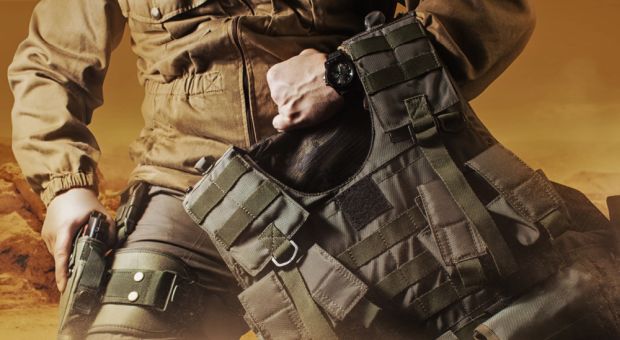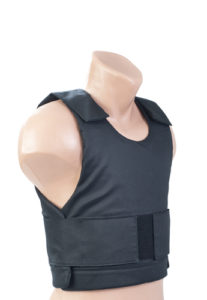Survivalists are well aware that in a life or death situation, it all comes down to your ability to plan and prepare in advance.
And nothing offers better preparation and protection than body armor. In a world where it’s too easy to acquire semi-automatic and higher-caliber weapons, urban crime statistics are too high and political turmoil is normal – more and more civilians are turning to body armor to stay safe.
You can’t know if you won’t suddenly find yourself in danger or an emergency situation that calls for the use of safety equipment. So it’s best to always be prepared. If a hurricane rolls through your neighborhood and wipes out the power down your entire block, it could be days before it gets turned back on. Or, if you get lost out in the woods during a hike, you will need supplies to build an overnight shelter and wait for a rescue party. As unlikely as these situations may seem to you now – when you’re safe and sound in your own home – they can happen to anyone at any given moment. If you don’t want to learn this the hard way, start planning early.
Simple Hack That Lets You Hit Any Target From 100 Yards
Being prepared is part of the strategy to say alive and safe. This is where body armor comes in. Body armor can significantly increase your chances of survival in the event of a natural or man-made disaster, but you need to learn to rely mostly on your skills, speed and ability to plan ahead. Use body armor as a supplement to your survival strategy and it will fulfil its intended use.
What is the Purpose of Body Armor?
For a survivalist, body armor can be a broad concept.
You can use anything from store-bought carriers made from cutting-edge Kevlar material that offer ballistic, stab and spike resistance to self-made pads from extra thick clothes. Fortunately, with the level of advancement of modern technology and advanced protective materials, you now have plenty of choices of affordable, comfortable and lightweight body armor with different levels of protection.
Body armor can have different protective qualities, which are ballistic (against bullets), stab (against knives, pieces of glass, etc.) and spike (needles, ice picks, etc.) resistance. Each of these types of protections are characterized in the U.S. by the National Institute of Justice (NIJ). A vest can have both ballistic and spike and/or stab resistant qualities. However, more commonly, body armor that provides ballistic protection does not provide stab or spike protection.
Body armor is generally classified as soft and hard.
Soft body armor is more concealable and lighter, making it particularly suitable in urban situations and scenarios. It can provide protection from bullet and/or stab wounds, but the application isn’t as hard core. Covert soft body armor is designed to be worn under clothing or a light jacket and protects the wearer from other threats that the average person could face.
What Type of Body Armor Do I Need?
Body armor is rated at different levels based on the NIJ standards.
Because the protection of the armor increases with the level, so does its weight and the cost. Ballistic body armor is rated by the Department of Justice against different round calibers. Basic soft body armor does not stop penetration from sharp objects and weapons, but it will stop thick-bladed stabs and offers protection against slashing attacks. These makes them suitable to wear in places, where there are large gatherings of people (protests, marches, during riots, etc.) as in close quarters – people often use concealable but deadly weapons, such as knives, broken bottles, screw drivers or other piercing objects to cause harm.
Basic levels, such as Level IIA. (Level I is not in use anymore) through IIIA are considered soft body armor types and don’t always offer sufficient protection in high-tension situations, while Level IV provides the fullest protection against pistol and melee weapons but is bulkier and heavier on the wearer.
Based on the National Institute of Justice’s rating system for body armor and its requirements, the levels are categorized as follows:
- Level I: Generally not recommended, the lowest level protects only against fragmentation and very low velocity pistol ammunition, such as a. 38 Special and .22 calibers.
- Level IIA: Suitable against vast majority of threats encountered on the street by law enforcement officials, although it does not protect against blunt trauma injuries. It is tested against 9mm and .40 calibers.
- Level II: Considered the best balanced option between blunt trauma protection, cost, and thickness/ comfort/ concealability. It performs well 9mm and .357 Magnum calibers at higher velocity.
- Level IIIA: Well suited for high-risk situations as it covers more of the uncommon or unusual threats, such as 9mm and 44 Magnum calibers at sub-machine gun velocity.
- Level III: With more comprehensive safety coverage, Level III extends to cover even 7.62mm NATO rounds, which makes it suitable for military personnel and security operatives in high-risk areas.
- Level IV: The highest rating for Body Armor offers protection against armor-piercing .30-06 caliber rounds and all lower level threats.
Given that knife attacks and attacks with other sharp-edged and spiked weapons, you might want to consider body armor with combined protection. This will keep you safe against slashing attacks that will otherwise pierce the carrier. With the growing number of terrorist attacks, crime and random assaults in urban zones – investing in some quality protective equipment is essential to staying safe. You can choose between different styles, systems and levels to find the one that fits you best.
If you want to ensure you receive maximum protection, you should go for a combination of ballistic and stab proof systems that are available for purchase online but they are more expensive. In terms of bullets – pistol bullets are easier to stop than rifle bullets, because they are slower. This type of combined protection gives the best chances of surviving in risky situations, such as riots or a scenario, where you might need to travel from point A to point B while facing attacks and poor weather conditions.
How Can Body Armor Keep You Safe?
It’s hard to put into words just how important body armor is, but let’s just say – it can be the difference between life and death in a number of scenarios. Still, many survivalists are quick to buy different type of guns and ammo, but overlook protective vests. However, it’s really this simple – if you own a gun or plan on owning a gun, you should also have a bulletproof vest in your house.
Planning ahead and being prepared for a number of scenarios give you time to equip yourself with the right type of body armor and stay safe in all circumstance. Equipping yourself with adequate protection helps you stay safe in specific circumstances. You need to understand how body armor works, what it can and cannot do for you against different threats, and how to select the best one for you to make an informed decision when buying one.
Regardless of the type of protection you choose – bullet, stab or combined – you should keep in mind that no vest is 100% effective against the threats you can face.
Attacks can always result in serious injury and even death, so you should not treat your body armor as a guaranteed solution in all situations. Staying safe by wearing an adequate bullet or stab proof vest is only part of the equation.
Knowing how and when to react gives you the upper hand in situations, increasing your chances of survival.
Selecting the Right Body Armor
Now, we know most people think that ‘more equals better’, but when it comes to surviving in the midst of a zombie outbreak – this is not necessarily true. Higher levels of armor do provide more protection, but they are heavier and bulkier, essentially turning you into one large, slow-walking tin can.
Given that your survival depends on how fast you can move and react to potential threats, you can see how this becomes a problem.
Compromising your safety by over-doing protection sounds stupid, but is a real possibility. Don’t make the mistake of buying the highest level of protection at the expense of comfort. Moving and operating a weapon (or any other type of equipment) with a vest takes some getting used to. If it gets too hot, too stiff or too uncomfortable, you are likely to obstruct your ability to move and compromise your safety as a result.
Accurately measure your torso to select the most comfortable fit. Too large vests hang loosely around the body and fail to provide adequate protection. Similarly, too tight vests will not only be uncomfortable, but the fibers will be under constant strain, failing to properly fulfil their function. It is worth considering shoulder and groin protection as if you’re purchasing hard armor for higher threat environments.
Make sure you try moving and running in it before you buy groin protection, though. This will help you determine whether it’s right for you.
Survivalists are known for their ability to plan and prepare in advance, so it makes sense to be familiar with when body armor is the right choice. As it’s getting easier to acquire semi-automatic and higher-calibre weapons, more and more police departments and civilians are opting for higher levels of protection.
For general patrol duty and survival purposes, a concealable, soft body armor vest in Level III will do the job. It provides the highest blunt trauma protection rating in soft body armor. This is the best for very high-risk situations to cover more of the uncommon or unusual threats. It can keep you safe from .44 Magnum Semi-Jacketed Hollow Point, 9 mm FMJ and lower level calibers .40 S&W Full Metal Jacket and .357 JSP.
Defense remains one of (if not the biggest) element of survival. And with body armor being now lighter, more comfortable and more protective than ever, it has become an invaluable asset for any survivalist. It is a useful piece of equipment to have in general, but in hostile situations it is absolutely necessary to ensure your survival.












































































Hello, Melissa. Question for you. I know of One company who is Experimenting with a light-weight body armor – made with – 1 Layer of Kevlar, 1 Layer of Carbon Fibre (latticed), separated by a thin layer of “FGRP” kinda like “KyDex”. Can you tell us about that one – if it works or not ?
Interesting!